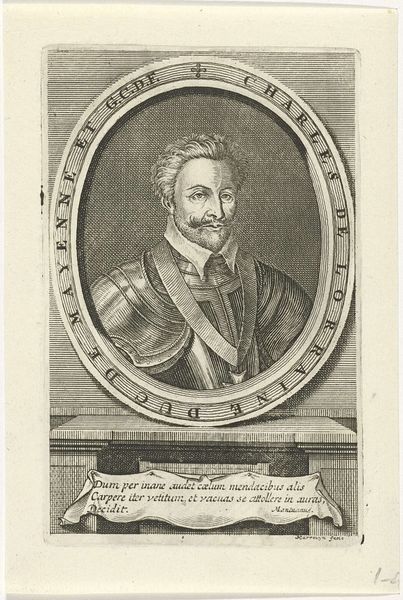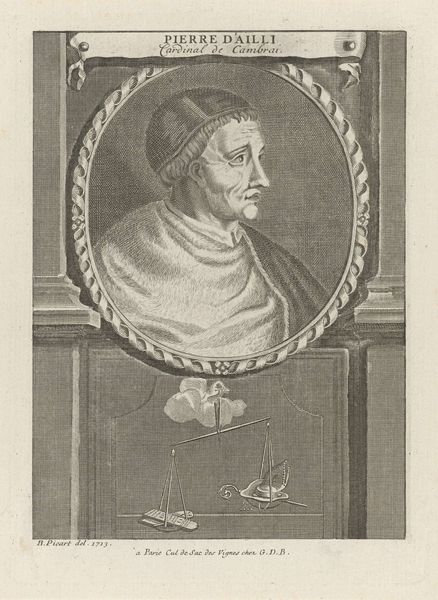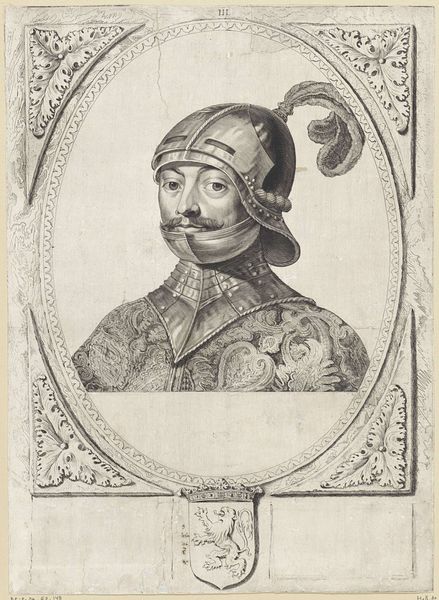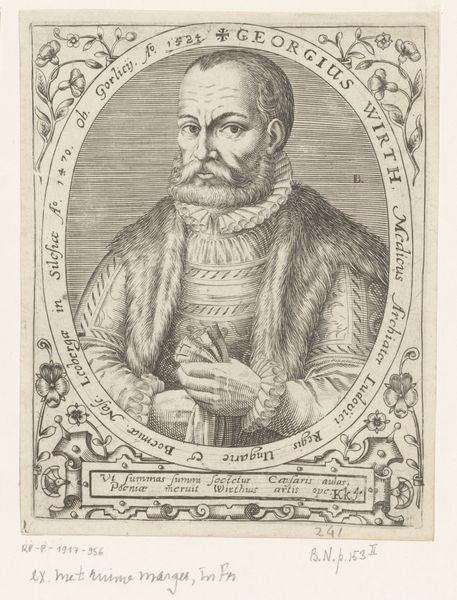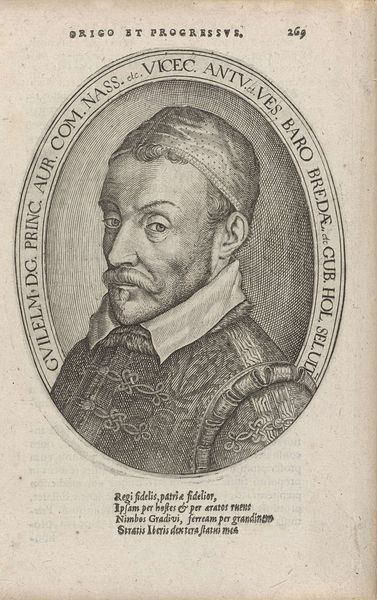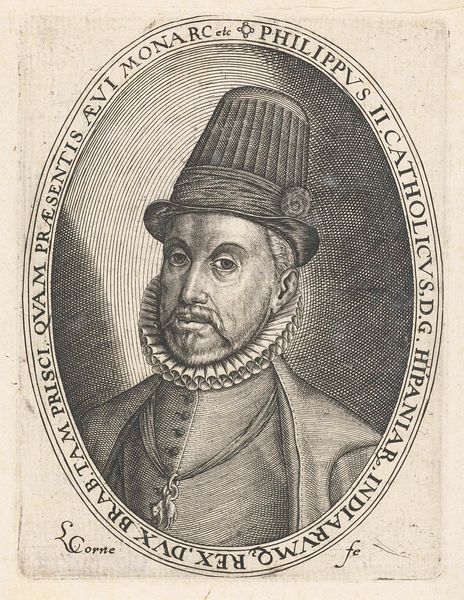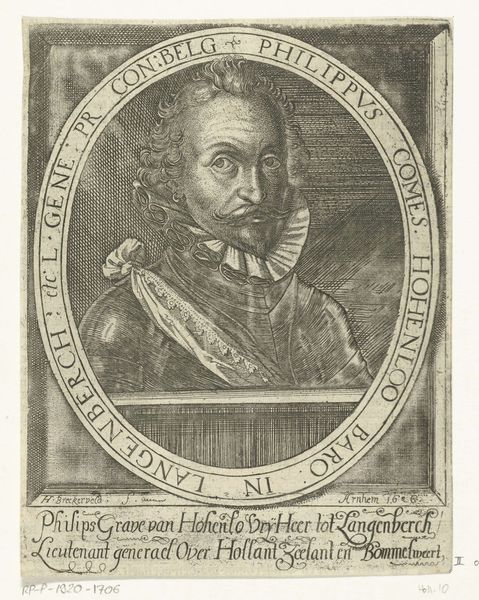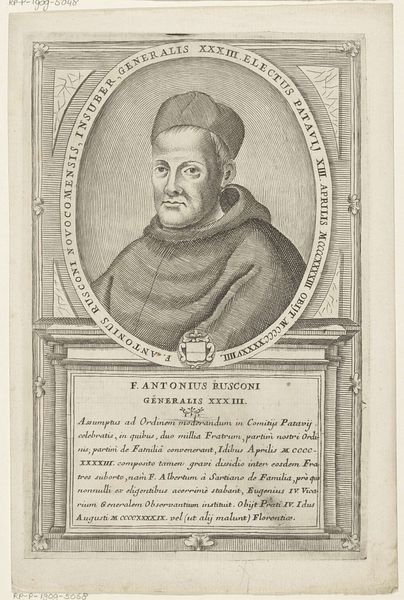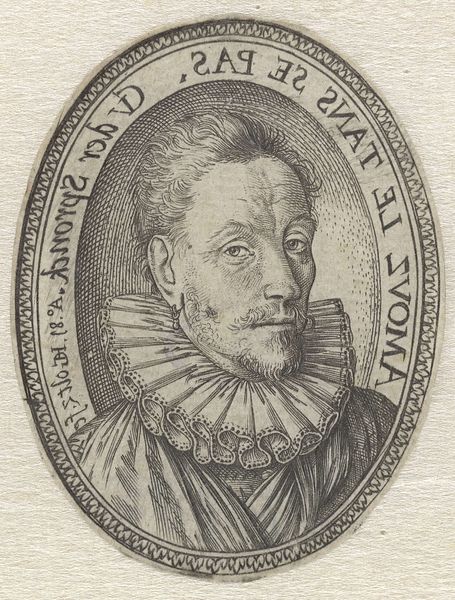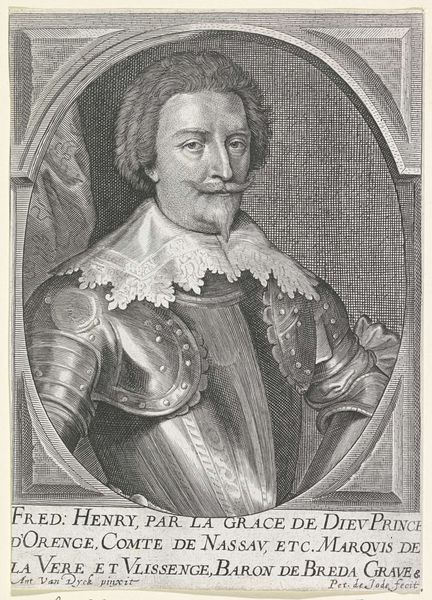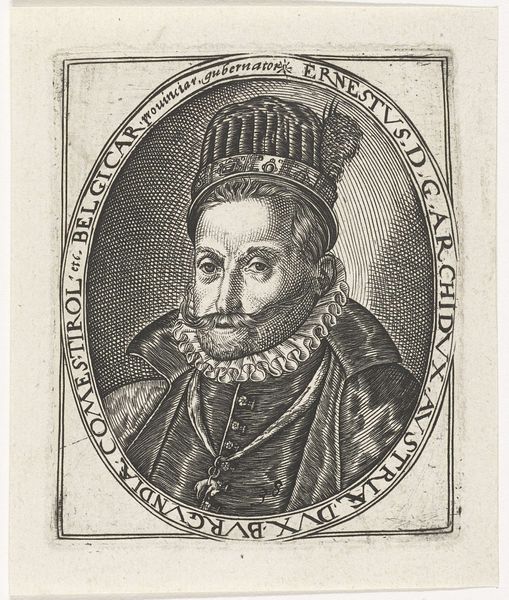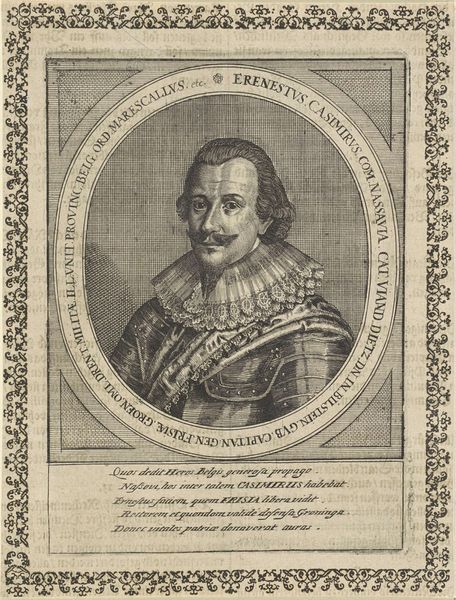
engraving
#
portrait
#
baroque
#
old engraving style
#
history-painting
#
engraving
Dimensions: height 95 mm, width 77 mm
Copyright: Rijks Museum: Open Domain
Boëtius Adamsz. Bolswert made this small print, around 1610, using the technique of engraving. An engraver uses a tool called a burin to manually cut lines into a metal plate, which is then inked and printed. Look closely, and you can see the crisp, precise quality of the lines. These aren’t freehand gestures like you’d find in a drawing. Rather, they were achieved through painstaking labor. The amount of work involved in an engraving like this is considerable, and gives the image a very particular feel. Notice how the density of the lines creates areas of shadow, giving depth and volume to the vicar’s face and clothing. Prints like this one played a key role in disseminating images and ideas in the early modern period. They were, in essence, a form of mass production – making images available to a wider audience than ever before. So, next time you look at a print, remember the skill and effort that went into its making, and its important place in the history of visual communication.
Comments
No comments
Be the first to comment and join the conversation on the ultimate creative platform.
